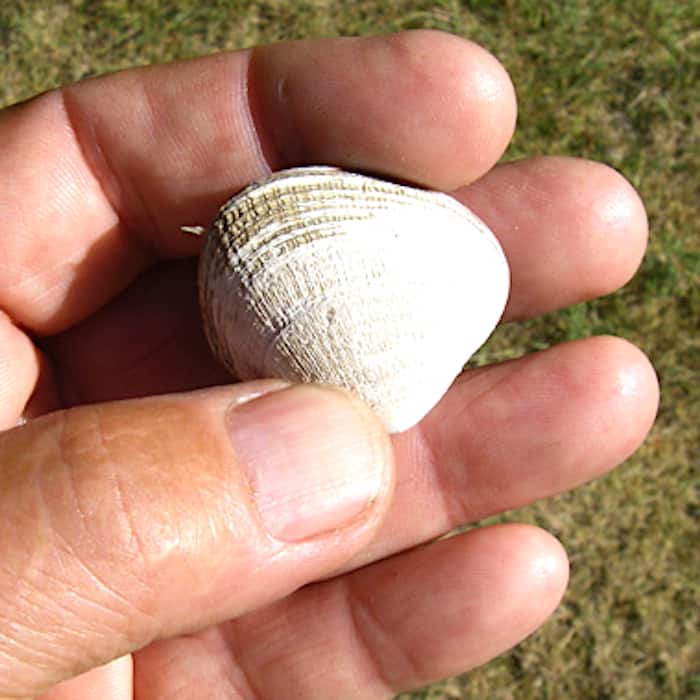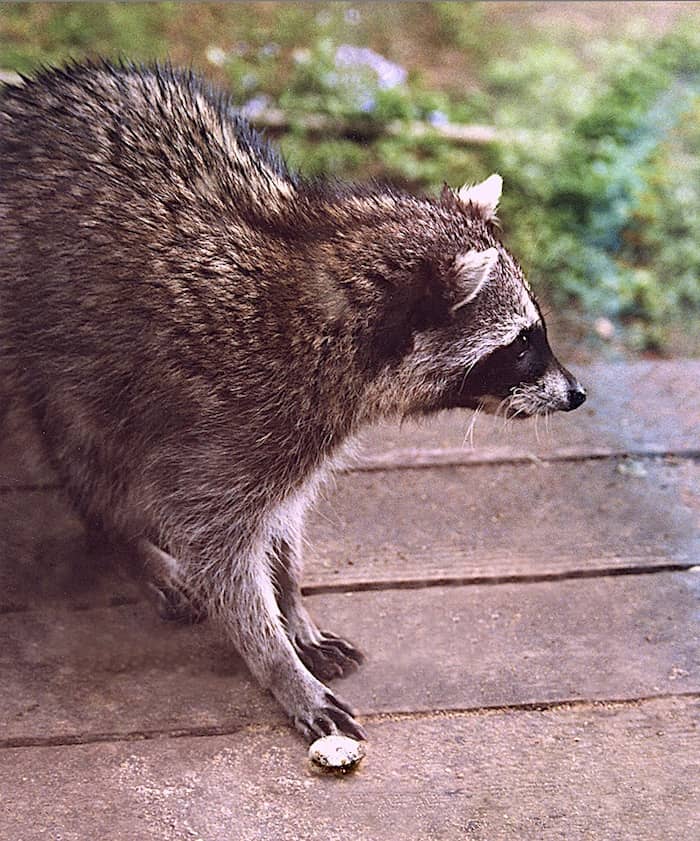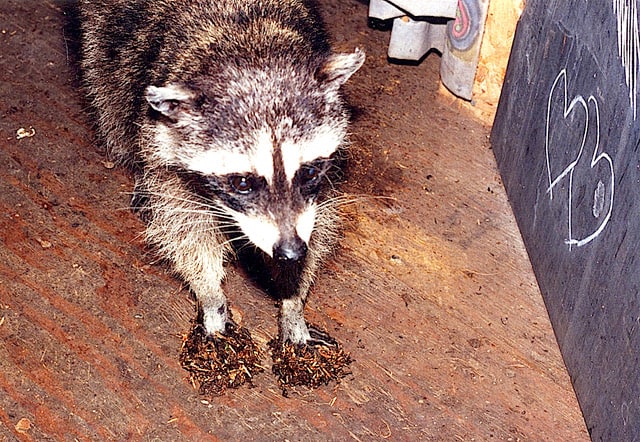Some time ago, Aileen and I found a Manila clam near our house, which is to say about 100 metres from the nearest saltwater. The shell surface was somewhat corroded, so we knew where on the beach the individual had come from: a sandy area which receives a lot of freshwater runoff, hence the surface etching.
A long way for a clam to travel.
When looking at the still living and tightly closed bivalve more closely, we noticed a small object protruding from its commissure (Fig. 1).

After removal, it revealed itself as the tip of the claw of a raccoon (Fig. 2).

Immediately, a number of previous observations fell into place, and the story arranged itself in entertaining detail in our minds:
It had been an eerie experience that night, when we heard the strange irregular clang of footsteps on our porch for the first time and could not figure out who was causing them. Sometime later, the same thing happened during daylight hours, and the culprit was revealed: A raccoon was walking on our porch with a clam attached to one of its front claws (Fig. 3).

Like some furry version of a pirate with a wooden leg, the somewhat baffled looking animal had come all the way up from the beach, clippety-clopping along, with the clam knowing no better than to hang on for dear life while being carried to its doom. The tip of the claw we found in one of those itinerant clams attests to the strength and persistence of the shell-closing reflex.
The diet of coastal raccoons is dominated by shore crabs, as a casual glance at their scat will reveal (Fig. 4).

Being well-known opportunists and omnivores, raccoons will take advantage of any other food source when available. We have observed them attempting to pry open marine clam shells but giving up relatively quickly. (They fare much better with thin-shelled crunchable mussels.) Raccoons will come into contact with clams in less direct, more incidental ways: We have watched them dig in the intertidal zone for the marine polychaete Nereis brandti, sometimes called giant sea nymph or clam worm (Figs.5 – a, b and c).

As the images reveal, during trenching for the worms, a raccoon will inadvertently dig up numerous clams, and occasionally its fingers will slip inside a gaping clam shell, which will immediately clamp down and trap the claw.
A complex chain of events, which we have observed in detail at various times and in various stages, is conjured up in our memory entirely, whenever we now find a marine clam in the wrong place.
Addendum to “Perambulating Clam”
Slug Paws
There are many hazards an inquisitive animal with agile hands can encounter on a daily basis. The list of human-made dangerous objects is long, but nature offers many challenges of her own – the story of the clam encounter demonstrates as much.
Quite regularly, a raccoon will come padding across our deck or through our hallway with very silent footsteps.
The opposite effect to the hollow clacking noise a clam clamped to a toe will make is achieved by a generous application of fir needles to the front feet (hands) of the animal concerned (Fig. 6):

Another mystery? This one is easily solved: during its recent wanderings, the raccoon encountered a banana slug, and the prize had to be investigated, manipulated and tested for edibility.
We all know how large and slimy our local banana slugs are: there is enough glue in a drop of slime to collect a whole wad of forest duff – two wads, in this case. A lot of rubbing and scraping is needed: washing with water seems counterproductive since the slime just absorbs the liquid and gets slimier and slimier…



